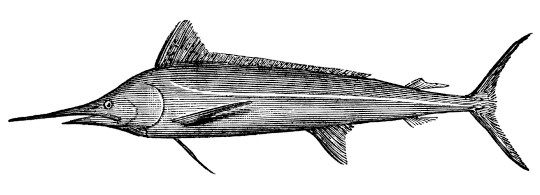Ernest Hemingway? Bernard Berenson? Apocryphal?

Question for Quote Investigator: Ernest Hemingway’s classic novella “The Old Man and the Sea” has been exhaustively analyzed by critics and commentators. Beleaguered high school students have been coerced into composing essays about the tale. Unsurprisingly, the story has been transformed into a cornucopia for symbol generation.
Yet, Hemingway himself apparently believed that there were no symbols in his fable. He stated that “the old man is an old man”. Would you please help me to find a citation?
Reply from Quote Investigator: In September 1952 Ernest Hemingway sent a letter to Renaissance art specialist Bernard Berenson. Hemingway commented on the lack of intentional symbolism in “The Old Man and the Sea”. The letter was reprinted in the collection “Ernest Hemingway Selected Letters 1917-1961”. The collection editor noted that the famous author used an irregular spelling for “symbolism”. Boldface added to excerpts by QI:1
Then there is the other secret. There isn’t any symbolysm (mis-spelled). The sea is the sea. The old man is an old man. The boy is a boy and the fish is a fish. The shark are all sharks no better and no worse. All the symbolism that people say is shit. What goes beyond is what you see beyond when you know. A writer should know too much.
Below are additional selected citations in chronological order.
In 1954 “Time” magazine published a profile of Hemingway, and the editors commented on his novella:2
In the past, hardly anyone ever suspected Hemingway novels of symbolism. Then, in The Old Man and the Sea, people saw symbols—the old man stood for man’s dignity, the big fish embodied nature, the sharks symbolized evil (or maybe just the critics).
Hemingway told “Time” that writers should not deliberately plant symbols in their stories, but he conceded that readers could find many meanings in his tale:
“No good book has ever been written that has in it symbols arrived at beforehand and stuck in,” says Hemingway. “That kind of symbol sticks out like raisins in raisin bread. Raisin bread is all right, but plain bread is better.”
He opens two bottles of beer and continues: “I tried to make a real old man, a real boy, a real sea and a real fish and real sharks. But if I made them good and true enough they would mean many things. The hardest thing is to make something really true and sometimes truer than true.”
In 1993 “The Columbia Dictionary of Quotations” included an entry for the remark. The spelling for “symbolism” was corrected:3
There isn’t any symbolism. The sea is the sea. The old man is an old man. The boy is a boy and the fish is a fish. The shark are all sharks no better and no worse. All the symbolism that people say is shit. What goes beyond is what you see beyond when you know.
ERNEST HEMINGWAY (1899-1961), U.S. author. Letter, 13 Sept. 1952, to the critic Bernard Berenson (published in Selected Letters, ed. by Carlos Baker, 1981), of The Old Man and the Sea, published that year.
In 2000 “The New Penguin Dictionary of Modern Quotations” included an entry for the remark with the same citation.4
In conclusion, Ernest Hemingway did contend that symbolism was non-existent in his story “The Old Man and the Sea” as shown in his 1952 letter. Yet, he acknowledged that elements of the tale “would mean many things” to readers. In addition, most critics believe that the author of a work is not the ultimate authority on its interpretation.
Image Notes: Public domain illustration of a marlin from “The Century Dictionary” of 1895. Image has been resized.
Acknowledgement: Great thanks to Leslie Katz whose tweet led QI to formulate this question and perform this exploration. Katz pointed to a tweet by Letters of Note @LettersOfNote containing an excerpt from the crucial 1952 letter from Hemingway.
Update History: On September 14, 2024 the format of the bibliographical notes was updated.
- 1981, Ernest Hemingway Selected Letters 1917-1961, Edited by Carlos Baker, Letter To: Bernard Berenson, Letter Date: September 13, 1952, Start Page 780, Quote Page 780, Charles Scribners’ Sons, New York. (Verified with scans) ↩︎
- 1954 December 13, Time, Books: An American Storyteller, (Page not specified in digital archive), Time Inc., New York. (Online Time magazine archive; accessed time.com on June 17, 2022) ↩︎
- 1993, The Columbia Dictionary of Quotations, Edited by Robert Andrews, Topic: Symbols and Signs, Quote Page 889, Columbia University Press, New York. (Verified with scans) ↩︎
- 2000, The New Penguin Dictionary of Modern Quotations, Edited by Robert Andrews With the assistance of Kate Hughes, Entry: Ernest Hemingway (1899-1961), Quote Page 190, Column 2, Penguin Books, London, England. (Verified with scans) ↩︎